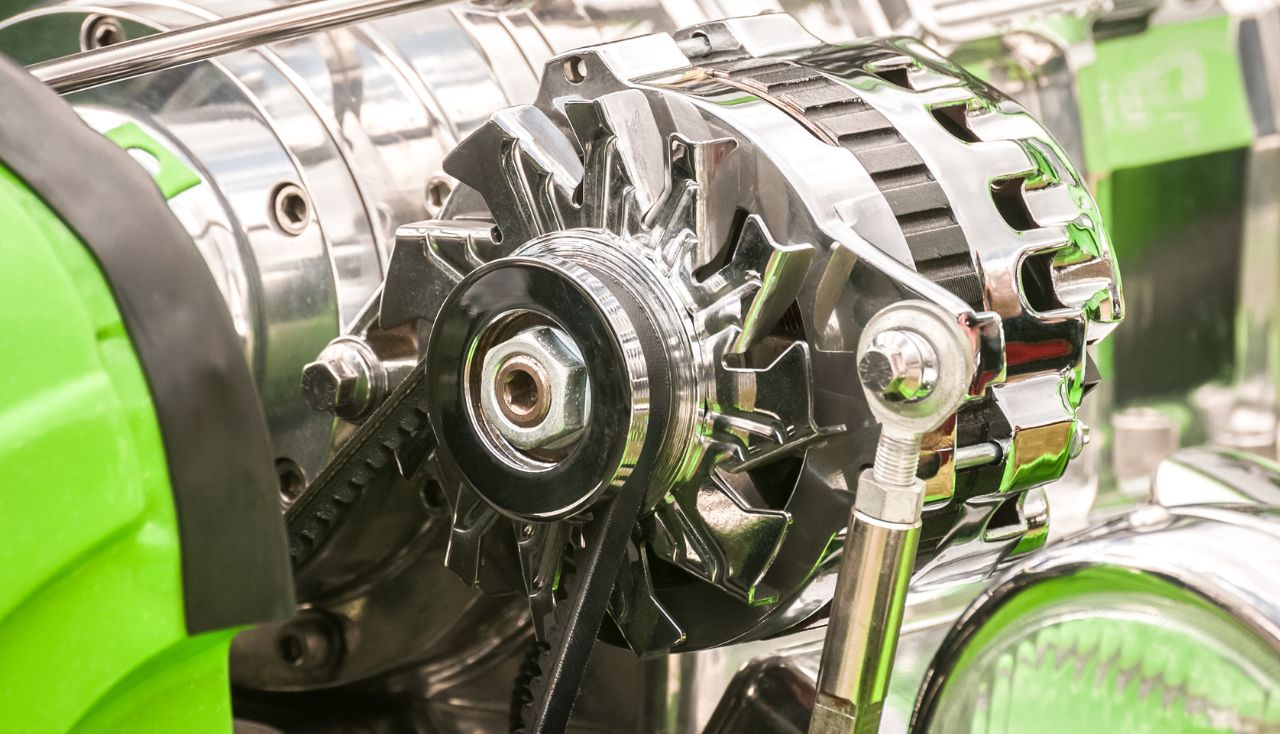
Photo by nelsonart On Envato Elements
Over time, alternators tend to deteriorate. However, considering them on par with tires, belts, and hoses is incorrect.
Regular maintenance can significantly prolong the operational life of an alternator, even when it is frequently used.
Alternator testing
The primary sources of damage to alternators are heat, vibration, and contamination from external factors. However, if these issues are not addressed promptly, they can significantly decrease the lifespan of an alternator.
Fleet mechanics need to include maintenance tasks in their routine schedules to address the potential impacts of high temperatures, vibrations, and contamination.
Save Money for Your Fleet by Taking Care of Your Alternator.
Regularly inspecting the alternators in your fleet is crucial for effective preventative maintenance. A comprehensive visual check by a mechanic can easily identify the top three problems with alternators.
Given that heat is a major factor in causing alternator malfunction, the examination should begin with the cooling system of the alternator.
When dealing with air-cooled alternators, it is important to inspect the vents for any blockages and confirm that the external fan, if present, is in proper working condition.
The inspection process for liquid or oil-cooled alternators is more lengthy. It is recommended to follow the manufacturer’s guidelines for replacing oil or other liquid coolants. Carefully check the coolant lines for any recent bends or kinks and ensure that the vent or drain lines are kept free from debris.
Over time, an alternator can suffer catastrophic damage from even the slightest vibrations. To prevent such damage, the following measures can be taken:
During maintenance or repairs, it is important to inspect the mounting bushings of the alternator. Over time, these bushings can wear out and cause the alternator to become unstable within the engine. This can result in excessive vibrations and ultimately, the early breakdown of internal parts.
Additionally, loose bushings can create further issues if the alternator is grounded through its mounting hardware. Therefore, it is essential to check that the mounting hardware is securely in place and has not become loose due to vibrations.
Over time, an alternator can be worn down due to contamination.
Regularly inspect the engine for external pollutants such as dust, foliage, and other natural debris that may be stirred up during travel. Electrical connections that are coated in grime can cause as much stress on an alternator as a dead battery. The longevity of the alternator is often reduced due to dirty electrical connections. Additionally, substances like oil or road salt can potentially harm internal parts if they manage to enter the system.
Fleet mechanics may neglect the maintenance of the alternator.
Another factor that can contribute to the early failure of an alternator is an overly tight drive belt. Just as a loose belt can hinder proper charging, a belt that is too tight can put a strain on the alternator bearing and cause damage. It is important to regularly check the tension of the belt during maintenance.
The alternator’s failure could be caused by exceeding its intended electrical load. To prevent this, regularly test the battery and ensure the battery terminals, cable ends, and alternator connections are clean and in good condition.
Substituting parts, not full generators.
The lifespan of an alternator can be extended by fleet mechanics through the replacement of specific components before their wear and tear.
It is recommended to inspect the regulator and brushes every 12 to 24 months. In case the brushes do not meet the required specifications, it is advisable to replace them preemptively to prevent a domino effect of malfunctions in the alternator.
By replacing these degradable parts before they reach their breaking point, fleet technicians can prolong the lifespan of a single alternator rather than relying on it indefinitely. This proactive approach can prevent unexpected breakdowns and ultimately keep your vehicle operational for a longer time.
Steps for cleaning your alternators.
– Avoid using engine degreasers that contain petroleum to clean the alternator.
– Do not attempt to clean the alternator with compressed air or a pressure washer.
– Do not directly spray any cleaning solution or degreaser into the air inlet openings of the alternator.
Dilute any off-the-shelf degreaser to a 50/50 mixture with water before applying with a cloth or gently spraying.
Allow the cleaner to soak for 5 minutes before using a soft, short-bristled (2-3 inch) brush to clean heavily soiled areas and terminal connection points.
Order your alternator parts or restock on complete alternator units today here at Rapto Part. This will allow your fleet mechanic to easily replace old units and get your fleet back up and running.